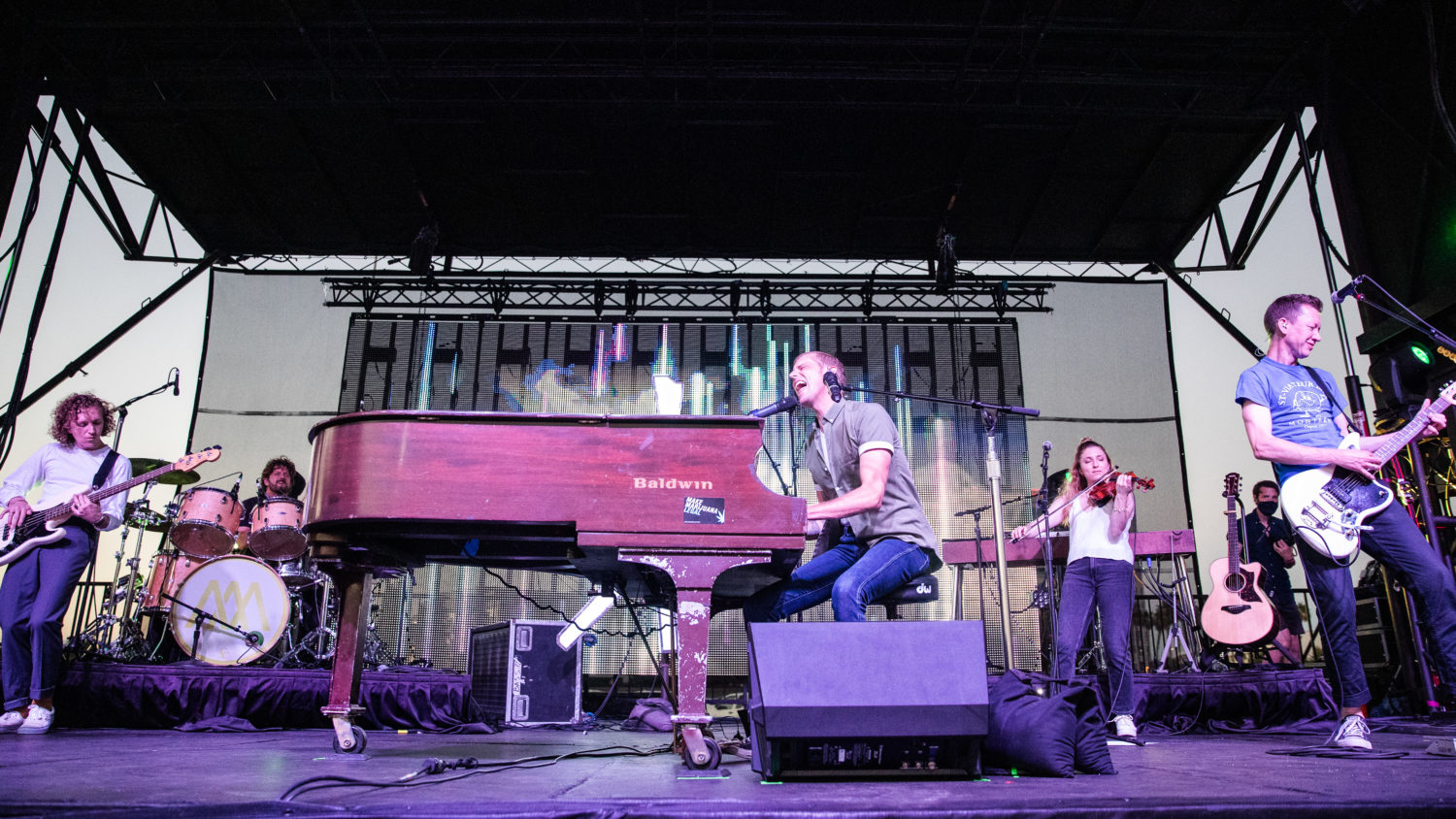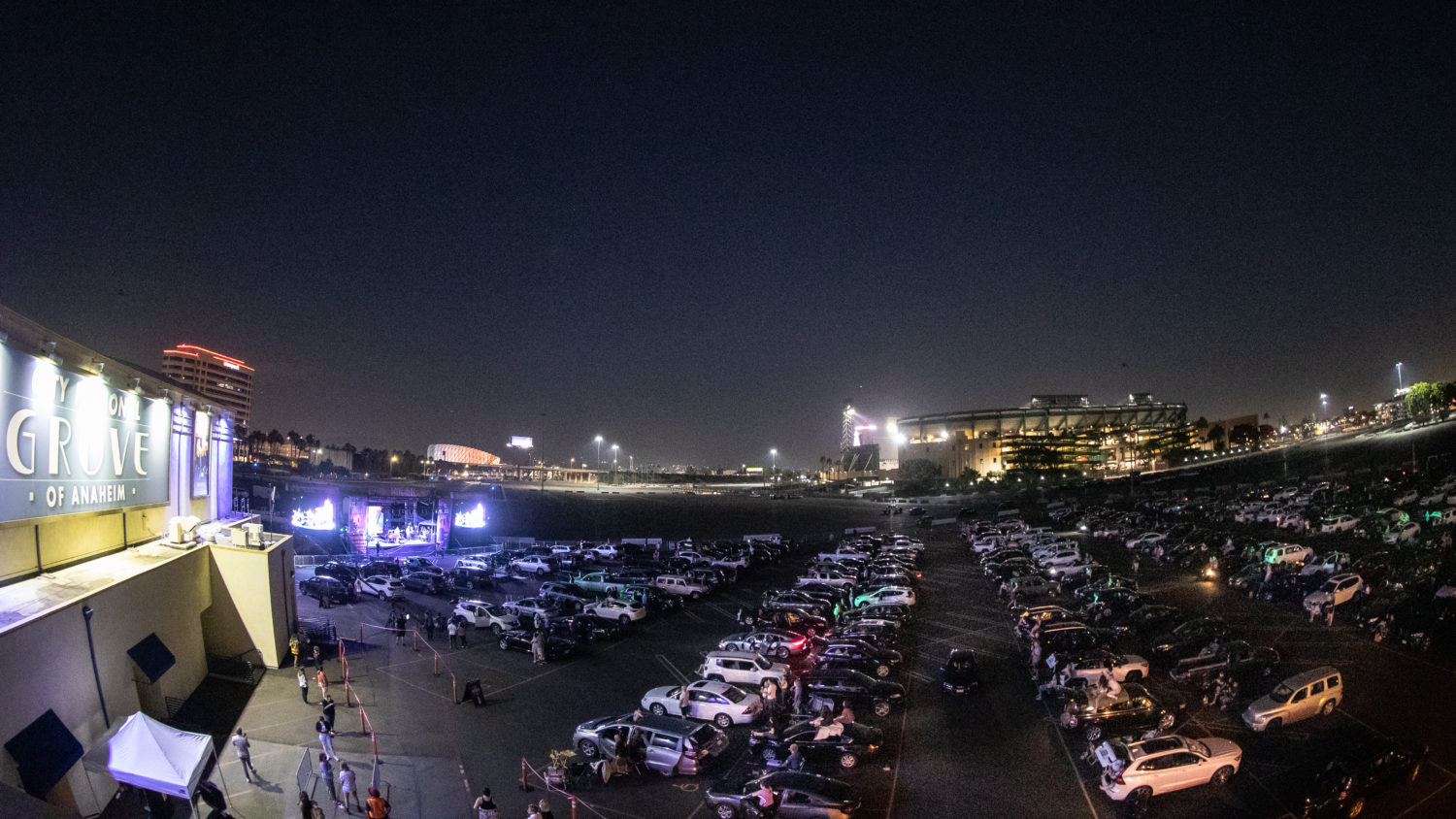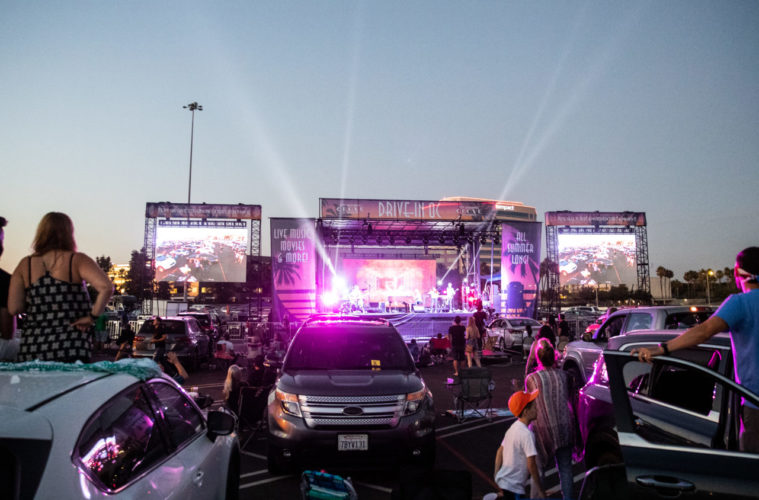Back in December, when we published the story “No Access: Why Rising Concert Prices Increasingly Put Big Shows Out of Our Reach,” we had no idea of the horrors that 2020 was about to present us with. That story explored the fact that, with recorded music no longer a viable means to generate income for most artists, the gap was being partially bridged through more expensive tickets.
But the last seven months, and the COVID-related nightmare, have changed everything. Of course, while people are dying, live music and its survival is not a priority. That said, at some point in the future people are going to attempt to host some sort of live entertainment, and it’s worth having a close look at what that might look like.
At the moment, the first concert on the calendar for Inglewood arena the Forum is Five Finger Death Punch on October 22, and the ticket prices (around $50-$100) look fairly standard. But how much that is going to change between now and then remains to be seen, because surely venues that hold that many people are going to have to implement social distancing rules — not just in October but most likely for the foreseeable future. Therefore, with less people in the venues but musicians and staff still needing payment, we would expect to see those changes reflected in the ticket prices. There’s so much that is still up in the air and we’re going to have to wait and see how it all manifests itself.

Andrew McMahon at Drive-In OC (Steve Thrasher)
Big changes are necessary and concert venues, promotors, bookers, etc are having to get inventive in order to survive. As we mentioned in last week’s cover story, one route being actively explored is drive-in concerts. Jordan Harding of Drive-In OC has been hosting concerts for several weeks at the City National Grove of Anaheim featuring the likes of Andrew McMahon and Common Kings. There were, he says, a lot of logistics to consider.
“We effectively created a new venue outside of our traditional venue,” Harding says. “There were a lot of things we had to think through, including restrooms, food and beverage, merchandise, staging, sound and lights, parking – all of those things we had to really think through from the very beginning, creating a new venue if you will. People are craving live entertainment right now and artists are craving performance opportunities. So, we put our heads together to figure out a way to make it happen.”

Similar events had taken place in Europe, as well as nearby Ventura, so there was a precedent that Drive-In OC could refer to. Still, there are questions. Even if people stay in their car, how do the restrooms work?
“We have an app, and the fan can enter the virtual queue from their own car,” Harding says. “We send them a text notification when it’s time to head to the venue. We utilize our restrooms inside the facility, regulating capacity. We take the temperature of the guest prior to entry, and we continually sanitize and clean them throughout the night.”
Each car has a designated area of 150 square feet, so they can get out of the driver’s side and set up lawn chairs if they wish, while still sticking to the social distancing rules. However, a recent Chainsmokers drive-in concert in the Hamptons saw attendees get out and ignore the rules. How does Harding intend to prevent that sort of chaos — especially if people (not the drivers, we hope) are drinking?
“We have Anaheim Police onsite, we have a significant security presence, to make sure people are following the rules,” he says. “Fans are respectful of the rules because they know that, if they want live entertainment, they have to. We have to protect, keep each other healthy, and be good citizens. I think people are excited to get out of the house and enjoy some live music. So far they’ve been respectful of the guidelines.”
We can hope. The people that do attend are having to pay increased prices for the pleasure, due to the massively reduced capacity.
“It’s an expensive endeavor, there’s no question about that,” Harding says. “There’s high cost for the staging, lights, and then there’s limited capacity. A normal concert, we can do up to about 1700 people. In this scenario, we can do about 275 cars. So, we price everything on a per car basis for the concert, and we limit the number of people in the car as there are seatbelts. We’re encouraging people to come who are part of the same family unit. People who have been isolating together. But it’s a tough challenge to figure out how to make this model work for drive-in concerts, with high fixed costs and limited capacity. That is being reflected in the ticket prices to a certain extent. Another reason we’re selling food and beverage, [is] to try to recoup some of those expenses.”
It’s not a sustainable long-term business model though. Writing for UK newspaper The Telegraph, Ian Winwood covered a July 28, 2020 indoor concert by punk troubadour Frank Turner. The performers, he wrote, appeared without pay and played for a crowd of 200 in a venue that normally holds 1,250.
“Inevitably, it’s a bit of a palaver,” Winwood writes. “Admission to the venue is staggered and features a temperature check, a one-way system, the filling-out of a form, and an in-house ‘test, track and trace’ system. Masked waiting staff are summoned by customers waving rainbow-coloured flags. Despite a bounty of booze behind the bar, by far the most popular alcoholic products are the bottles of hand-sanitiser on each of the 50 tables.”

Drive-In OC (Steve Thrasher)
—–
Of course, not every venue has the capabilities and facilities to host outdoor parking lot shows, or the space to keep a reasonable number of people distanced. As is so often the case, it is the smaller independent venues that will likely suffer the most. In L.A. we’ve recently seen the Satellite close, and more are likely to follow without federal aid. To that end, the National Independent Venue Association (NIVA) was formed.
“There is no way to over dramatize how much of a crisis we’re in right now,” says Audrey Fix Schaefer, NIVA’s director of communications. “We did a survey of members of the National Independent Venue Association and found that if the shutdown lasts six months or longer and there is no federal assistance, then 90 percent said that they would go under which is absolutely devastating. It should be a big red blinking alarm because we’re four months in now. That’s why we’re fighting so hard to get funding that will assist our survival until we’re able to open safely. The legislation has to get passed and turned into law before Congress goes on recess in August. So, we’ve got two or three weeks now between now and the potential saving of an industry or the collapse of an industry.”
Independent venues, in general, have zero income and 100 percent of their overheads. Plus, they have negative revenue because they’re having to refund concealed concert tickets. Some, including the Whisky A Go Go, have been hosting crowd-less livestreamed shows, but again that isn’t a sustainable long-term plan. Federal aid is going to be necessary, and Schaefer says that they do at least have bipartisan support in the House and Senate.
“That is something that is helping us get up every day and keep developing more support for that,” she says. “That’s an adaptation to the PPP program. Other PPP programs helped a lot of other businesses, but we’re completely shut down and can’t qualify so we’re asking for a modification so that money can be used for our overheads that are fixed, that we cannot get out of paying — rent, mortgage or utilities. This is an industry that has never come together like this. This organization didn’t exist before the pandemic. We’ve also never individually or collectively gone to lobby Capitol Hill because we’ve always figured out how to survive. But they’re just leaving us in the lurch with no assistance.”
The good news is that we can all help by going to saveourstages.com, and making our voices heard. It takes about 30 seconds, and autopopulates in order to send an email to your senator. Hopefully, we can the message across that this does matter. Because, while drive-in concerts provide welcome relief for now, it’s a temporary relief.
“We’ll keep doing this until the city and county say we can open our doors safely and responsibly,” says Harding. “We’re not sure this is a sustainable business model per say, but at least it’s an opportunity for our staff to get back to work and for us to continue serving the community with live entertainment. It’s a stopgap solution but one that gives people some hope and uplifts the community.”
Drive-In OC hosts Fitz & the Tantrums on Saturday, September 5 and Sunday, September 6 at the City National Grove of Anaheim.
Advertising disclosure: We may receive compensation for some of the links in our stories. Thank you for supporting LA Weekly and our advertisers.

